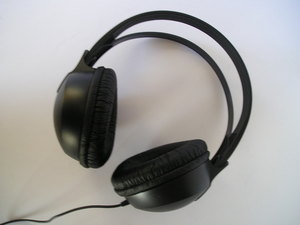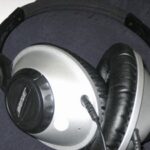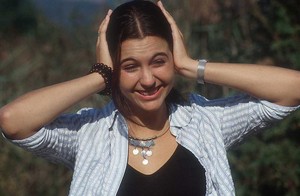Lots of people these days enjoy music with the advent of the portable cd player, ipod, mp3 players, and mp4 players. It’s becoming more and more common to see people at work, in an office, on the bus, on a plane or doing any other boring mundane task with a set of headphones on. But noisy areas and devices can be a pain. Couldn’t some one just find a way to block it all out?
Bose see saw how big this market was becoming and decided to take on the challenge of removing distracting noises. Along came the sound canceling earphones. Soon after, noise canceling headphones began to flood the market. A new era had been born, one where you don’t have to worry about being distracted from your music, even while mowing the lawn. How exactly do noise canceling headphones work though?
Early headphones called passive noise canceling headphones worked by simply padding the area around the outside and inside of the ear piece. This made it possible to muffle the sounds before they hit the ear drum canceling out noises of up to 15 to 20 db. This wasn’t enough for some however. During a flight on a jet or operation of a lawnmower the noises can be in excess of 70 db, that’s pretty distracting I’d say. So a new challenge came into play: how can you increase the amount of noise that can be filtered out or muffled? More padding could muffle the noises further, but not nearly enough and people don’t want to walk around with massive pillows on their heads.
So came the advent of the active noise canceling headphones. These new headphones used much of the same technology of the old passive type, but these new headphones are capable of canceling out considerably more noise.
These new headphones cancel out more noise by implementing small microphones, Noise-canceling circuitry,an extra speaker and a battery. The microphones are used to register what you hear, the noise-canceling circuit then detects what shouldn’t be heard by listening for low frequencies which don’t belong to your music. Once a noise is picked up the headphones play that noise back 180 degrees out of phase and both noises crash before that noise can reach your ears.
To understand this better picture a beach with waves crashing on it.The current of the ocean nearly always runs toward the beach and it’s not really possible to reverse it. What happens if you create an artificial current just off the beach? The waves will crash against each other out in the middle of the water and no more waves will get onto the beach.
While noise canceling headphones do a decent job distinguishing between the noises a wearer wants to hear and the noises they want to keep out, some people say they diminish sound quality by muffling desired sounds. Listeners have also complained about a change in air pressure, although ports built into the headphones are meant to vent air trapped behind the speakers.
This new method added another 20db of noise canceling capability for a total of up to 40 db of noise that can be canceled. Stronger noises need stronger counter noises. Much like stronger ocean currents would need stronger back wash currents to stop them. In order to generate these stronger currents it’s likely the head phones would have to have a speaker exposed on the backside of the headset to allow enough displacement of air to generate the required amount of sound or rather anti sound.




